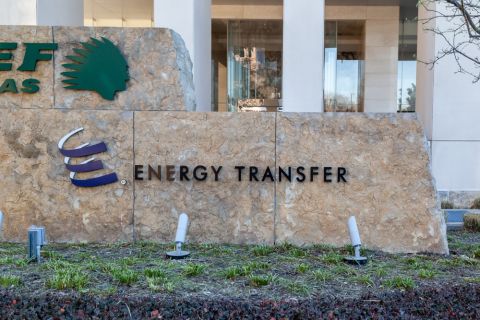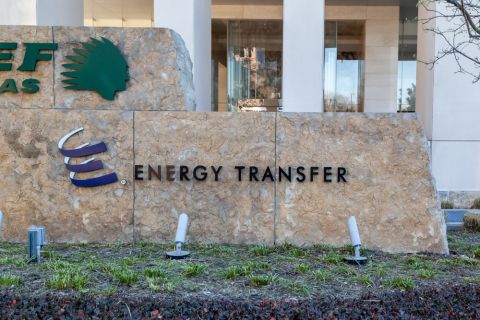Thanks to the “shale gale,” the U.S. is sitting on a trove of unconventional energy resources, and midstream companies are expanding their pipeline infrastructure to take full advantage of it. Environmental and public safety concerns are increasing, however, as the industry is forced to address the risk of gas leaks with the horde of new pipes.
The U.S. Environmental Protection Agency (EPA) said in a recent study that methane leakage, a potent greenhouse gas emission, has continued to rise—although recent surveys have found EPA's estimates too high. Pipeline operators also face safety risks. Fortunately, producers and pipeline operators naturally strive to eschew incidental gas loss and have available methods of detecting and measuring leaks in their infrastructure.
In 2011, there were almost 20,000 miles of gathering pipelines in the U.S., 460,000 wellheads and almost 2 million miles of main and individual service pipelines, according to the Center for Climate and Energy Solutions. The EPA’s study gave gas pipelines an overall leakage rate of about 2.1%.
According to an EFA Technologies Inc. study, a leak first occurs at a specific location in a pipeline or vessel, but as pressure and temperature change in response to the environment, a system’s contents acquire velocity and lose density. The design and engineering firm found the effects of a leak—a distortion of the system’s current mass, momentum and energy—will propagate over time, and the velocity at which these changes will spread occurs at nearly the speed of sound through the contents.
However, the magnitude of the pressure disturbance will decrease with distance and time of the initiating event, EFA says. A new steady state will eventually be reached in the pipeline but the time required for this to happen with larger leaks will be lengthy.
Pressure and velocity
When a pipeline is not leaking, changes in pressure and velocity occur at fairly slow rates. In a transition to a new steady state, though, the system’s fluid will naturally change its pressure and velocity in such a way that conserves mass,energy and momentum, the study says. For this reason, leak-detection applications generally measure pressure or velocity as a source of evidence that a leak has occurred. EFA goes on to say that the measure of pressure is generally the easiest, particularly in constant-flow situations, but optimum analysis selection depends on the configuration and control methods utilized in specific situations.
When deciding which leak detection system to use, operators have to consider the potential value of products lost, the cost of clean-up and the potential impact on reputation and future projects. According to a Schneider Electric report, a common choice is computational pipeline monitoring (CPM) systems, which uses real-time information from the field to estimate volume, mass or the hydraulic behavior of pipeline products. However, the options for this type of system are still almost endless, and pipeline officials have to determine which CPM method will be of best use. More than one might be warranted.
Schneider says the first step is to decide whether the pipeline is in a high-consequence area (HCA). “High-risk, or high-consequence, areas are defined as areas where a pipeline leak will have a significant impact on people, property, the environment or all three.
“Whether through regulation, local authority or community requirements and expectations, HCAs typically demand higher levels of leak detection capability and sensitivity to mitigate the higher risk of significant consequences from a leak,” the company said.
Schneider recommends HCA pipelines use a real-time transient CPM model—a configuration applicable under all pipeline flow conditions that calculates both leak location and leak volume. The real-time transient system also includes leak detection for pump stations and tank farms.
Low-consequence systems—pipelines that generally operate in steady state conditions or pipelines with shorter segments—are more likely to utilize volume-balance CPMs, which measure the imbalance between the receipt and delivery meters and calculates an overall pipeline density based on temperature and boundary pressure.
The Point Arguello case
In the 1990s, EFA, formerly Ed Farmer & Associates, created and patented the event-based Pressure Point Analysis (PPA) leak detection application for the Point Arguello platforms offshore Santa Barbara, California, which had unusual hydraulic problems on its sour-gas pipeline. In its simplest implementation, PPA analyzes data taken at a single measurement point by recording a system’s current pressure level and comparing it to recent trends in the same system. Additional points can be used to configure a SmartPoint, EFA’s alarm-processing feature in its LeakNet product line that the company says can provide 100% nuisance-alarm free operation.
Today, many companies still use event-based methodologies for leak detection; others have moved to piezoelectric- based systems. Fundamentally, a structure experiences acceleration whenever it moves, which in turn generates ultrasound and vibration. According to a DigiKey Corp. release, a piezoelectric sensor can then convert this noise into an electrical charge used to measure pressure, acceleration, strain or force.
The Association of Oil Pipelines’ (AOPL) Leak Detection Rupture Monitoring project, as a part of its pipeline leadership initiative,” is developing strategies to further improve leak detection. AOPL says on its website that it should only take five minutes for a company to recognize a 50% flow change, five minutes to respond and 20 minutes to report the situation.
Accomplishing those goals is vital in order for the oil and gas sector to maintain effective safety and environmental practices.
Laser detection
Picarro Inc., an environmentally focused technology firm, has developed certain technologies to quickly and continuously track natural gas emissions and leaks. According to the company, the Picarro Surveyor for Natural Gas Leaks employs laser-light technology and a cavity-ring down spectroscopy (CRDS) on a mobile platform to measure the near-infrared absorption spectrum and determine what gas molecules are present in the surrounding atmosphere, as well as in what concentrations.
In order to detect even the slightest trace of molecules, the Surveyor’s CRDS uses a three-mirror cavity and a single- frequency diode laser to create a continuous laser wave—the amount of time it takes for the light intensity to decay aids in continuously measuring potential gases at the parts per billion. The CRDS is also able to distinguish between different forms of the same gas, such as thermogenic methane (from produced natural gas) and microbial methane, ultimately reducing the amount of false alarms.
Despite the many different applications available, successful pipeline leak detection can present several challenges for the operator—communication outages, botched systems and inefficient placement of detectors are at the top of the list. Schneider Electric recommends operators use the American Petroleum Institute’s API 1149 standard to theoretically analyze a detector’s capabilities. This analysis technique weighs the time taken to detect a leak against the size of the leak.
In the other corner, equipment manufacturing company, Groveley Detection Ltd., recommends in a report that companies utilize a “noise mapping” survey to optimize detector quantity and positioning to better guarantee the correct monitoring of potential risk areas. A typical survey involves a visit when the site is working under normal conditions, during which the company would map the background ultrasonic “noise” present on-site. According to the report, the survey ensures that all essential equipment and plant areas are covered by an ultrasonic detector and allows each detector to be set at a specific alarm level to eradicate potential false alarms.
Recommended Reading
Post $7.1B Crestwood Deal, Energy Transfer ‘Ready to Roll’ on M&A—CEO
2024-02-15 - Energy Transfer co-CEO Tom Long said the company is continuing to evaluate deal opportunities following the acquisitions of Lotus and Crestwood Equity Partners in 2023.
For Sale? Trans Mountain Pipeline Tentatively on the Market
2024-04-22 - Politics and tariffs may delay ownership transfer of the Trans Mountain Pipeline, which the Canadian government spent CA$34 billion to build.
Summit Midstream Launches Double E Pipeline Open Season
2024-04-02 - The Double E pipeline is set to deliver gas to the Waha Hub before the Matterhorn Express pipeline provides sorely needed takeaway capacity, an analyst said.
Kinder Morgan Sees Need for Another Permian NatGas Pipeline
2024-04-18 - Negative prices, tight capacity and upcoming demand are driving natural gas leaders at Kinder Morgan to think about more takeaway capacity.
Scathing Court Ruling Hits Energy Transfer’s Louisiana Legal Disputes
2024-04-17 - A recent Energy Transfer filing with FERC may signal a change in strategy, an analyst says.





